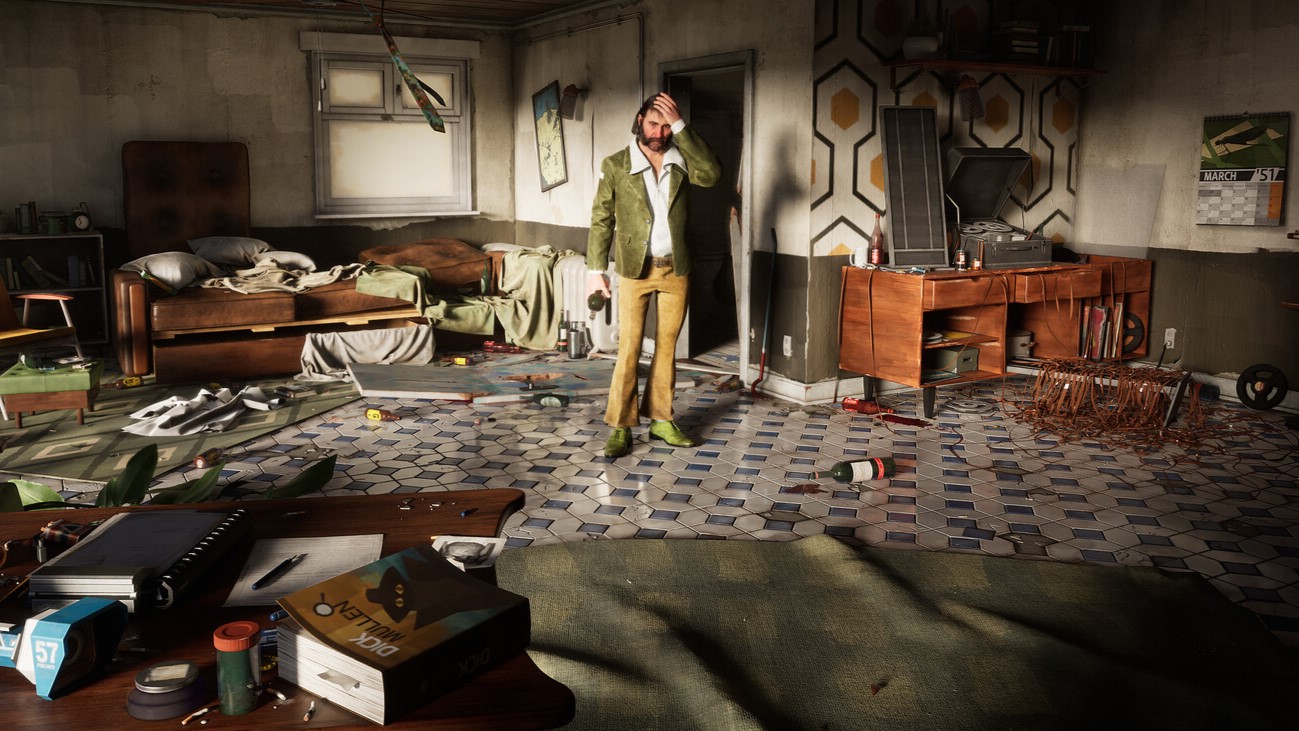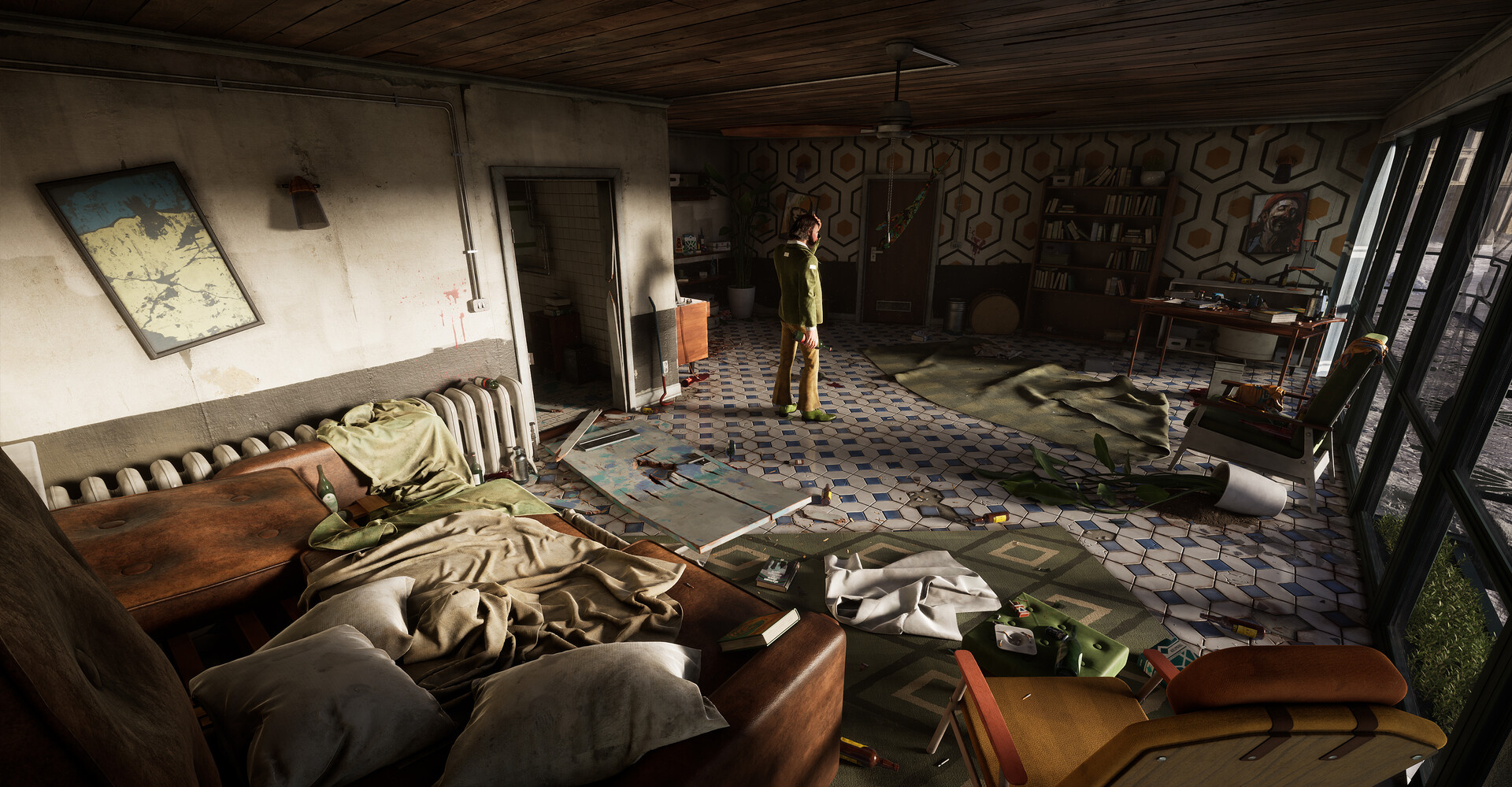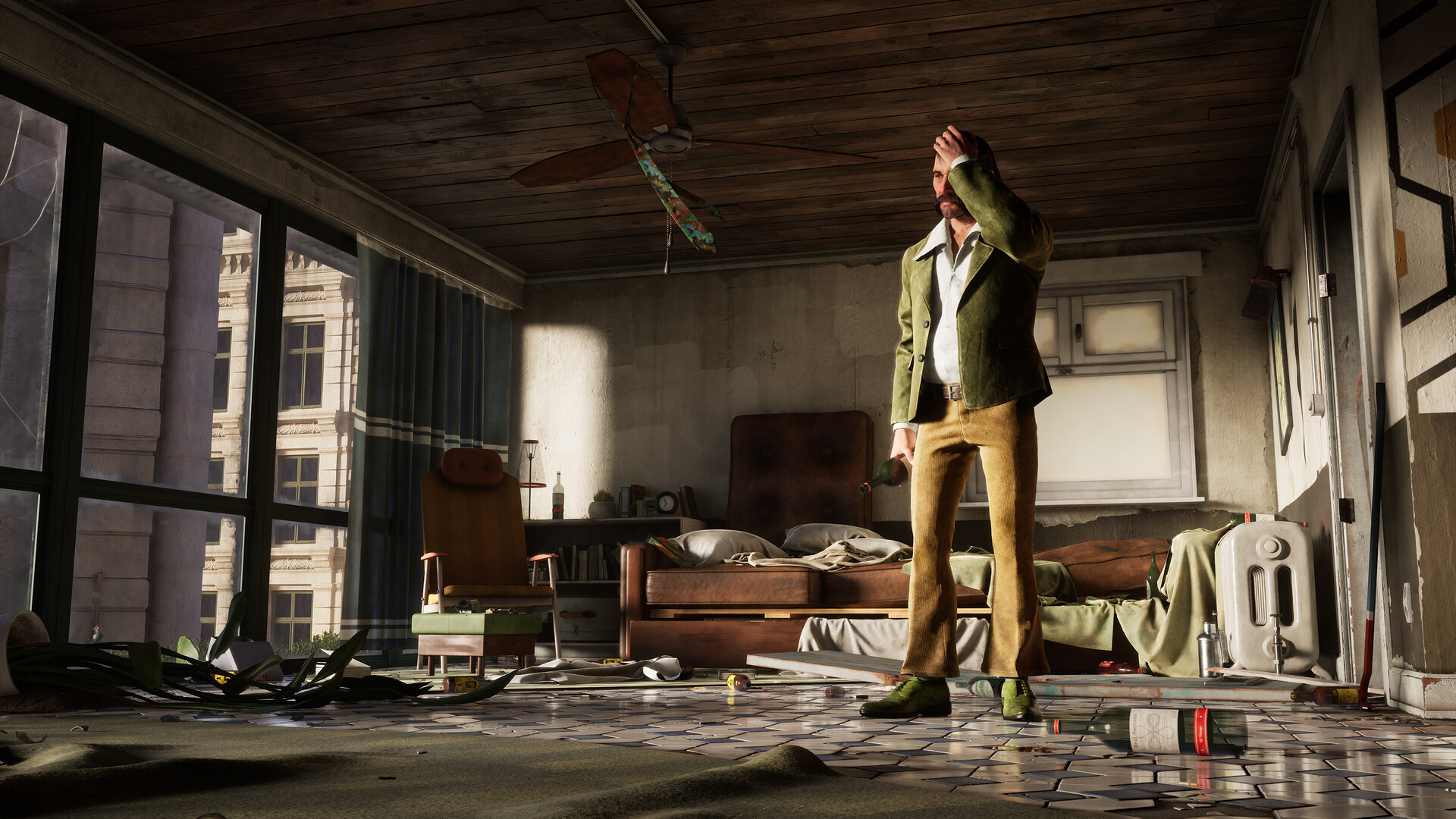This hyper-detailed recreation of Disco Elysium's opening scene makes a terrible hangover look like a terrific idea
Who knew a terrible hangover could look this good.

Disco Elysium begins with the mother of all hangovers. The game's protagonist has drunk himself to oblivion on a three-day bender before sleeping it off, and events begin as he blearily re-joins the world in a small, dishevelled hotel room. If you're anything like me, chances are the character didn't even make it out of there alive the first time through.
It's an opening scene that creates a vivid impression of this odd world and messed-up character, and certainly made its mark on Rocksteady senior environment artist Jonjo Hemmens. Hemmens decided earlier this year to remake the scene after playing Disco Elysium—it becoming his "favorite game of all time."
The goal was to adapt the game's aesthetic into a semi-realistic style, with Hemmens referencing the best-in-class work of Arkane's environments. "I decided to pick a relatively small space," writes Hemmens, "so The Detective's destroyed hotel room in the Whirling in Rags seemed to be a great spot [...] I plan on studying the texturing in Deathloop and Dishonored 2 and mixing it with the brush strokey style of Disco Elysium."
Hemmens has been working on this on-and-off since February and has completed the scene, and made a Youtube video showing it off. The artist Jean Zoudi was generous enough to allow Hemmens to use his version of Harrier Du Bois in the scene.
Perhaps the most striking thing about this scene is the level of detail the hotel room has, and how Hemmens has recreated certain elements of it like the gorgeously chunky record player. Over time he's added more and more new assets, including "the shirt, trousers, necktie on the fan, and the plant, amongst some other small bits of scatter and debris here and there."
He also "scattered around some empty cassettes for logic", which seems like a very ZA/UM thing to do. Du Bois' police equipment can be seen, some cigarettes, books, some speed "and military grade radiation sickness medication with some nice psychedelic effects!"
One of the most fun things about reading through Hemmens' process is how he tackles objects or colourations of unknown origin. "I also started work on the broken door on the floor," writes Hemmens, "which in-game has this strange blue and cyan splattering which I can only assume has come from some sort of paint or maybe alcohol? It’s a bit of an odd splattering, but I really like the contrast and the strangeness of the colour so I need to contextualise where this is coming from." Plans are afoot to get the door even more effectively smashed-up.
Keep up to date with the most important stories and the best deals, as picked by the PC Gamer team.
Hemmens says the scene isn't quite finished, even though it obviously looks incredible, and expects to do one or two more updates, and iron-out some kinks with his orthographic camera shot. Needless to say the video of this scene instantly has people wishing Disco Elysium could be re-made in this style but, y'know, sometimes a nice thing is enough in its own right. The below gallery is only a selection, all of Hemmens' work on the scene can be viewed on his Artstation pages.





Who knows where Disco Elysium is going to end up. Sadly for one of the best games ever made, there is an ongoing battle for its soul between Studio ZA/UM and most of the key creative figures involved in the game. This even spilled into Disco Elysium itself earlier this year when the current developers unexpectedly added a collage mode, and fans blasted the studio's leadership as "absolutely demonic", among other choice phrases.

Rich is a games journalist with 15 years' experience, beginning his career on Edge magazine before working for a wide range of outlets, including Ars Technica, Eurogamer, GamesRadar+, Gamespot, the Guardian, IGN, the New Statesman, Polygon, and Vice. He was the editor of Kotaku UK, the UK arm of Kotaku, for three years before joining PC Gamer. He is the author of a Brief History of Video Games, a full history of the medium, which the Midwest Book Review described as "[a] must-read for serious minded game historians and curious video game connoisseurs alike."

